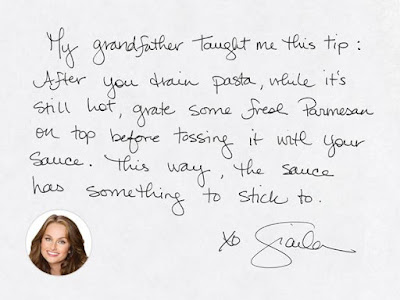Edited
by-Mir Niaz Morshed
Fine dining at
Michelin-starred restaurants around the world comes at a cost. But what you get
for those high price tags are outstanding dining experiences that can take you
to a castle in Switzerland or an underwater culinary experience in the
Maldives.
From Japan to
Europe to the Big Apple, luxe dining menus are often carefully designed tasting
courses paired with wines, which substantially adds to the consumer’s bottom line.
At Michel Bras Toya in Toya, Japan, guests pay for the view as much as for the
three-Michelin-starred food. A night of dining at this restaurant means a
decadent and delicious meal paired perfectly with views looking out at the rim
of a volcanic crater in Japan’s famed Lake Toya.
Over in Paris,
Alain Ducasse dazzles his guests with crystals (and stellar food, of course) at
Plaza Athénée. Yes, 10,000 crystal pendants hang overhead in the dining room.
Dishes here focus on the concept of “naturalité” and are meticulously delivered
to diners for an average of $1,142 for two.
Many variables,
besides the gourmet cuisine, can lead to a larger final bill. Ambience,
service, and even geography all factor in. In the case of Ithaa, in the
picturesque Maldives, the experience is all about going underwater in search of
the perfect meal.
Our list shares
the most expensive restaurants in the world by average price per person. The
per-person cost is an estimate based on the most recent menu prices and
includes food and beverage pairings.
1. Sublimotion (Ibiza,Spain) $2,078 per person
There is a reason the
world’s richest celebrities party in Ibiza. It’s not just the lush beaches that
Leonardo and the Bieb love, but also the amazing dining experiences, the most
indulgent of which is offered by Sublimotion. Described by head chef Paco Roncero
as a “radically
different show that you can only live by
yourself,” the restaurant is located in the Hard Rock Hotel in Playa de Bossa
and allows for only 12 guests at a time. The exclusive venue offers a 20-course
“gastro-sensory” meal that is intended to “elicit an emotional experience”
and allow you to experience humor, pleasure, fear, reflection, and nostalgia in
one bite. It’s probably how you’ll feel when you get the $2,000 bill, too.
Chef Paco Roncero
2. Urasawa (Beverly Hills, Calif.) $1,111 per person
This Japanese
culinary shrine, with a sushi bar and just enough room for 10 diners nightly,
is located in a shopping center off Rodeo Drive. Some might call it the West
Coast version of New York City's Masa, which is not surprising considering that
not only did Urasawa chef-owner Hiroyuki Urasawa train under Masa Takayama
before opening his restaurant, but also the space previously housed Ginza
Sushi-ko, where Takayama made his reputation. Urasawa has a nearly 30-course
omakase menu that changes daily.
Chef Heroyuki Urasawa
3. Per Se (New York City) $851 per person
This elegant dining
room overlooking Central Park in the Time Warner Center remains a must-have
experience in New York, even for Sam Sifton, who chose the restaurant for his
final review as The New York Times' restaurant critic last year — he gave it
four stars. Per Se upholds the standards set by Thomas Keller at The French
Laundry as it won a James Beard Award in 2011 for Outstanding Service and being
named the sixth best restaurant in the world in this past year by Restaurant
Magazine.
Chef Thomas Keller
4. The French Laundry (Yountville, Calif.) $800 per person
Taking over what had
been a good but far simpler restaurant, Chef Thomas Keller approached
contemporary American food with classical technique, and his The French Laundry
established new standards for fine dining in this country. In 2012, Keller and
The French Laundry received a coveted AAA Five Diamond Award, just another
honor to add to the pile. Like Per Se, The French Laundry offers a daily
rotating nine-course tasting menu; The French Laundry’s is $270 per head.
Chef Thomas Keller
5. Meadowood (St. Helena, Calif.) $750 per person
Chef Chris Kostow's
widely acclaimed three-Michelin-starred restaurant recently underwent a full
renovation under the direction of architect Howard Backen and designer George
Federighi. They debuted their new digs in March, including a kitchen outfitted
with state-of-the-art equipment and a five-seat Chef's Counter. The renovation
also included a bump up in the meal prices, which now cost $225 per person for
nine courses. The restaurant must be a popular date spot, because reservations
are overwhelmingly for parties of two.
Chef Chris Kostow
6. Alinea (Chicago) $693 per person
There's little
question that Grant Achatz, whose training includes stints with Charlie
Trotter, Thomas Keller, and Ferran Adrià, deserves the title of America's most
creative chef. The menu items at his Alinea sound deceptively simple (bass with
black pepper, vanilla, and lemon), but what shows up on the plate is absolutely
original. However, there are rumors going around that he and partner Nick
Kokonas have plans to make some major changes to the Alinea concept now that
they’ve successfully launched two new ventures, Next and The Aviary. Whether
that means adjusting the $210 per head tasting menu has yet to be disclosed.
Chef Grant Achatz
7. Joël Robuchon
(Las Vegas) $640 per person
The cooking is simply
exquisite in this opulently furnished dining room in the MGM Grand Hotel &
Casino. As the first restaurant opened in America by the famed, award-winning
Robuchon, commonly considered the greatest of the modern French chefs, it
maintains the highest standards, from its superb service and impressive (and
impressively pricey) wine list to such finely crafted dishes as truffled
langoustine ravioli and guinea hen with roasted foie gras and braised potatoes.
The 16-course tasting menu is a truly memorable experience — as it ought to be
at $425 a head, wine not included. However, their most popular tasting menu is
the two-course, which costs $120 a head. They also offer six-course and
four-course menus.
Chef Joël Robuchon
8. Kitcho
(Kyoto, Japan) $600 per person
Kitcho, located in
Kyoto, Japan, is the most expensive Michelin-starred restaurant in the world.
Last year, it ranked number one on The Daily Meal’s most expensive restaurants
list. Award-winning Chef Kunio Tokuoka is at the helm here, taking over where
his grandfather left off. The food nods to tradition with dishes including
turtle soup, raw salmon slivers with lemon, and green tea "snow,",
all created with the very best ingredients and served with a spare-no-expensive
attitude. The service is, of course, impeccable. What would you expect for $600
per person?
Chef Kunio Tokuoka
9. Masa (New
York City) $450–$600 per person
Located in the Time
Warner Center in the heart of New York City, Masa is one of the most luxe
dining experiences you can have in the Big Apple. Run by Chef Masa Takayama,
the restaurant advises diners that dinner will take no less than three hours
and will cost close to $450 per person before beverages, gratuity, or tax. The
experience, though, will be the ultimate in Japanese shibui. The food is prepared
quickly and plated as soon as guests are ready for the course to preserve the
idea that each dish is still in a living state, and each dish is composed to
ensure the character of the ingredient. It’s all very ethereal and could create
the perfect calm to ready you for the sticker shock that comes with the bill,
especially if you’re thinking of indulging in a 1995 Château Margaux Bordeaux
for $1,500. If you think that’s steep, you should know that cancelling a
reservation there could cost you $200 per person.
Chef Masa Takayama
10. Plaza
Athénée (Paris) $475–$575 per person
Michelin-starred Chef
Alain Ducasse reopened his flagship Parisian Plaza Athenee, located on the
prestigious Avenue Montaigne, restaurant this year to much anticipation. In a bold
move, he ditched most of the meat on the menu and instead focused on a largely
produced-based organic menu. Your average $475 meal (not including drinks) here
won’t get you the foie de veau or canard l’orange you might expect. Instead,
white-gloved servers under a ceiling lined with over 10,000 crystals will
expertly deliver new dishes like black rice with shellfish and Anjou-grown
quinoa, and Mediterranean fish with bulgur wheat. Expect a tab of around $1,150
for two when all is said and done (and eaten) as the menu prices do not include
beverage costs from Sommelier Laurent Roucayrol’s carefully curated wine list.
Chef Alain Ducasse
























































